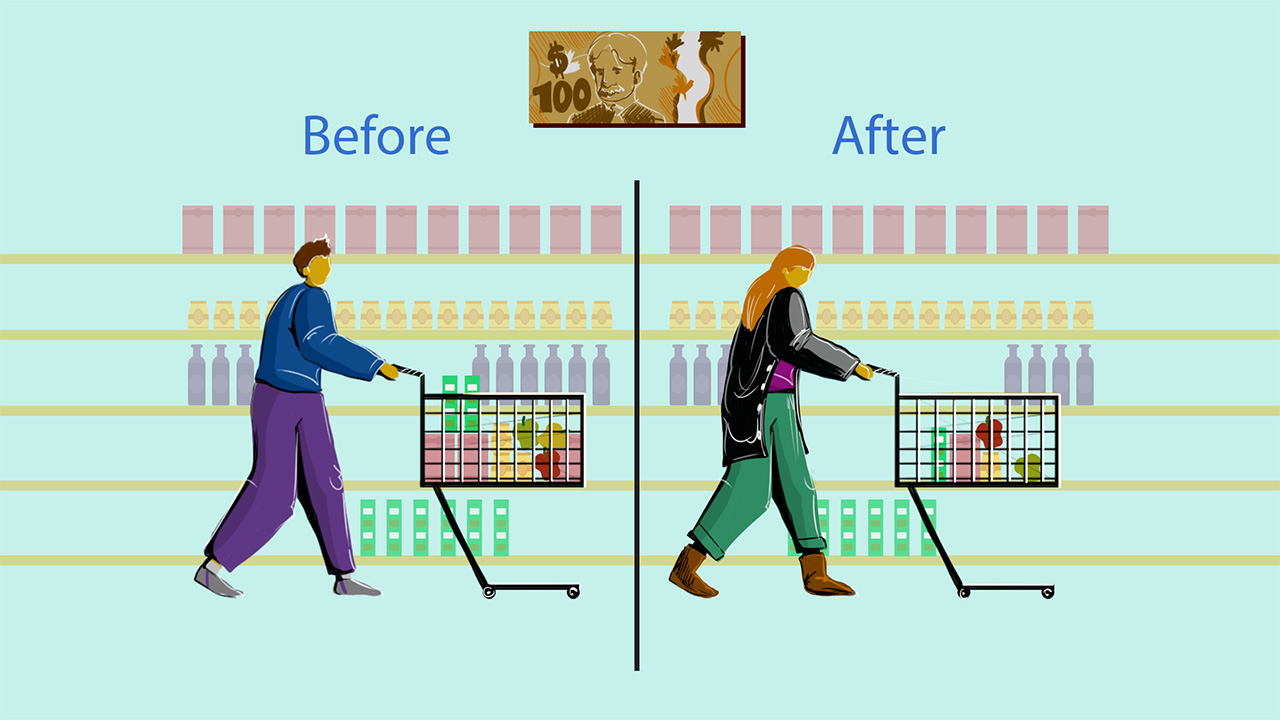The constant pain of grocery shopping amid high inflation
 CREDIT: MAURICIO FRANCO
CREDIT: MAURICIO FRANCOThe inflation that the country is currently experiencing has made filling the shopping basket more expensive.
Nothing escapes inflation. From fresh vegetables and fruit to frozen beef, consumers are juggling to fill their shopping baskets.
Libya Andrade, currently pursuing postgraduate certificate in project management at Fanshawe College, said that young people like her are experiencing a real challenge when it comes to affording food.
“Essential products like eggs, milk, and bread have higher levels of inflation in Canada than they’ve ever had in years,” said Andrade.
She mentioned that many of her friends of the same age need help to stick to their budget. In fact, according to the annual HungerCount 2023 report, of the 681,292 reported visits to Food Banks Canada in Ontario, 19 per cent were from people between the ages of 18 and 30. Locally, in only the first eight months of 2023, the food bank in London helped an average of 5,287 families per month, equivalent to 12,632 individuals. It marks a 43 per cent increase when compared to the same period last year.
As the coordinator and a professor in the Lawrence Kinlin School of Business, Angela Reid-Regier pointed out that rising food costs in Canada are due to various factors. One of the main factors she mentioned was the war in the Ukraine.
“The biggest issue for Canada is the fertilizer that comes from Ukraine,” Reid-Regier explained. “If we don’t have fertilizer, our yields in our crops are meager. And we were then needing help to get additional wheat from the Ukraine. So that plays a part. And then our crude oil and natural gas prices have increased because of the [war].”
The second factor, she said, is the pandemic. Almost four years since the appearance of the COVID-19 virus, agricultural machinery manufacturers are still trying to catch up with orders. It has caused commodity prices to rise as farmers struggle to obtain new combine harvesters or tractors. Additionally, workers are more necessary than ever in the agricultural industry, according to Reid-Regier.
Another issue is the Canadian dollar has decreased in value.
“Our dollar has decreased by about 10 per cent. And that means anything we buy from the United States is 10 per cent higher.”
That means transporting all the fruits and vegetables to Canadians during the off-season is costly.
And finally, she said, extreme weather and climate change is also impacting food cost. Forest fires and droughts caused a myriad of food shortages this past summer.
“The less supply there is, the more demand is, and the price goes up in the States, and they’ve had even more issues. There was a virus last winter that went through their vegetables, and it impacted overall lettuce and tomatoes.”
The next time you’re pinching pennies at the grocery store, consider that there are several factors at play making food more expensive than ever. Budgeting, shopping locally, and price matching might be some small ways to save money at the grocery store.














